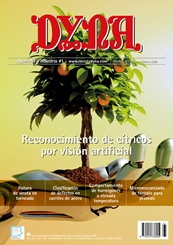STUDY OF THE ENGINEERING EVOLUTION OF THE WINE INDUSTRY THROUGH THE CLASSICAL PAINTING
Keywords:
pintura clásica, ingeniería vitivinícola, enología, teología, mitología, lagar místico, vendimia, cuba de pisado, prensa de viga y quintal, prensa vertical con doble husillo, bodega, sacramento, iconografía, classic painting, wine engineering, enology, theology, mythology, mystic winepress, vintage, stepped pan, beam and quintal press, vertical press with double spindle, cellar, sacrament, iconographyAbstract
The evolution of agriculture and the agri-food industry can be studied from many sources, but one of the most exciting is to do it through painting. The first artistic representations appear in the Egyptian culture in the tombs of the pharaohs. Later Greek and Roman mythology is one of the great themes of European painting as these cultures have associated Mediterranean crops and their transformation to a protective deity. In Greek mythology, the God of wine was Dionysus and in Roman mythology he will know him as the god Bacchus. Mythological scenes have been abundant in classical painting, especially in Renaissance artists. Associating agricultural engineering and more specifically the different mechanical processes existing in winemaking and how these have been represented pictorially according to different ideological concepts has been a very broad and difficult challenge to address. Therefore, in this work we will see how they have been treated by medieval painters of the early modern age, the cultivation of the grapevine and the extraction of the grape juice, in three passages less known by our modern society: firstly the vintage and the winepress of the blessed, followed by the mystic winepress, the treading of the grapes in the master Wenceslao and how the evolution of the winemaking teams has been associated and their representation until our days to finally cease to be attractive for their representation. In the studied works we have observed how the technique and the existing equipment has lasted for many centuries in the medieval presses, but that if the symbolism and the iconography have been direct factors that conditioned the pictorial representation in the winemaking processes. Key Words: classic painting, wine engineering, enology, theology, mythology, mystic winepress, vintage, stepped pan, beam and quintal press, vertical press with double spindle, cellar, sacrament, iconography.Downloads
Published
2020-01-01
Issue
Section
ARTICULOS

